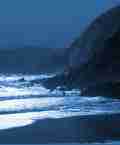 |
Search the site:

Walking Ireland’s MountainsWICKLOWThe second part of our tour of Walks in the Wicklow Mountains...East of the central spine are a series of fine, steep-sided glacial valleys of which the best-known is Glendalough, an important medieval monastic settlement. Other valleys, especially Glenmalure, are equally attractive. The most satisfying routes in the region are probably those taking in the rugged peaks on this side of the range: Djouce, Fancy, Scaff, the eastern side of Tonelagee or Croaghan Moira (routes 17 to 21, 30, 31). West of the central spine, wide river valleys and extensively forested moorland on gently sloping hills predominate, with the extensive Pollaphuca Reservoir mitigating its austerity (routes 22, 24, 29). The broad Glen of Imaal in the south is almost surrounded by a fine circuit of hills; unfortunately, much of its eastern side is out-of-bounds as it is an artillery range. Lugnaquillia itself, at the southern end of the central spine, is the centre of a starfish-like set of high-level spurs. Its grassy summit plateau, topped by a huge cairn, provides the elimax to several good circuits, which can start from almost any direction (routes 21 to 23). Access: access to the area is excellent as it lies adjacent to major ports, particularly Dublin. Glendalough in the heart of the mountains is about fifty kilometres/thirty miles from Dublin and one hundred kilometres/sixty miles from Rosslare Harbour. Express bus services run parallel to the spine of the range along the N11 and N81, through rather distant from it. The rail links are not very convenient. Roads and accommodation: the road system is generally good. A road (the Military Road) runs parallel and close to the spine of the range and provides an excellent drive. Two high-level east-west roads cross the range. These three roads give a good introduction to the range and provide starting points for walks. Logistically, Dublin, the hub of the transport systems and with varied accommodation, is the best centre, but if you dislike cities, there are several good smaller centres, though none equally well located as Dublin for the east and west of the range. Of these Glendalough is easily accessible and is well placed in a lovely location. Other good centres are Roundwood or Enniskerry on the east, and Blessington or Baltinglass on the west. There is a good choice of youth hostels, some of which are within walking distance of one another, so that a hostel-to-hostel walking trip is feasible. Local bus services: parts of the range, especially the northern fringe and the Glen of Imaal, are well served by Dublin Bus. The St Kevin's Bus Service provides an invaluable service to Glendalough. Maps: the maps covering the region are quite a motley collection. A good Discovery Series I :50,000 map (sheet 56) covers the bulk of the mountains. Parts of the north and south are covered by old one-inch (1:63,360) maps ("District" series). An old and execrable 1 :50,000 map (the "Wicklow Way"), now out of print but possibly still available at some outlets, covers some of the south. It is marginally useful for some areas not covered by other maps. Two sheets of the half-inch series (16, 19) also cover the mountains, the bulk on the former. The route of the Wicklow Way is covered by a map/guide at a scale of 1:50,000. A 1:25,000 map covering the area around Glendalough is issued by the National Park authorities. It shows paths and tracks in great detail, though the present edition (1988) depicts an out-of-date route for the Wicklow Way. Note that on the accompanying sketch map the coverage of the "old 1:50,000" map is not shown in the area that is better covered by sheet 56. The Wicklow District map runs only three kilometres south of sheet 56 and is therefore not shown at all on the sketch map.
Route 16: North Wicklow – Kippure
Route 17: North-East Wicklow – Djouce
Route 18: East Wicklow The next Wicklow extract from Walking Ireland's Mountains can be found here: Part 3
Information extracted from Walking Ireland’s Mountains: a guide to the ranges and the best walking routes by David Herman, published by Appletree Press.
|
[ Back to Top ]
All Material © 1999-2004 Irelandseye.com and contributors
